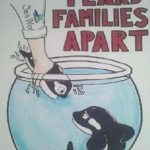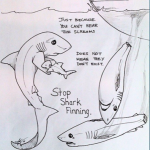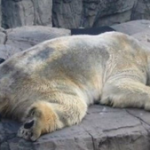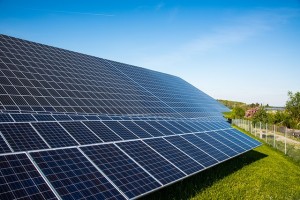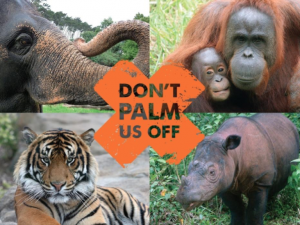 There seem to be certain issues that get pushed aside by the media and most of the world because they are deemed to be not as important as everything we do see on the news, however, they are very important to me. This is all in regards to the unjust treatment of non-humans. While I have chosen only four items to speak about, it is important to keep in mind that there are so many more which need attention as well.
There seem to be certain issues that get pushed aside by the media and most of the world because they are deemed to be not as important as everything we do see on the news, however, they are very important to me. This is all in regards to the unjust treatment of non-humans. While I have chosen only four items to speak about, it is important to keep in mind that there are so many more which need attention as well.
Firstly, there is the issue of shark fin soup. Shark fin soup is a delicacy in China and a few other Asian countries, made by using the fins of sharks. An estimated 100 million sharks are killed per year for shark fin soup, and, in reality, the fins actually don’t add any flavour to the soup, but considering that a bowl costs upwards of $100, it is a huge money making industry that has no plan in stopping anytime soon. Unfortunately, for the longest time sharks were the face of beasts and killers, which makes it harder to get people to agree to save them. But considering the ratio of 100 million sharks we kill vs. the less than one human that they kill per year, I’d say it’s time for their image to change.
Secondly, there is the issue of palm oil. Big producers of palm oil destroy rainforests and the natural habitats of animals like elephants, orangutans, tigers, and rhinos. Not only does it destroy their homes but it can also seriously injure them since one of the methods used to gather palm oil is by burning the trees. In fact, one of the top producers of modified palm oil is the brand Nutella. However, palm oil isn’t only found in food but also in products like creams, soaps, shampoo, and many others. So, in the future, check the list of ingredients of a product and if you read “Modified Palm Oil”, take a moment to consider whether it’s really worth it.
Thirdly, I’m sure that nearly everybody has been to a zoo before, and maybe even got the chance to pet a lion or a tiger, either an adult or perhaps a cub. However, most people aren’t aware that those poor animals were actually drugged. Sometimes to make them fully unconscious, but most of the time just to make them a little bit calmer than they should be, because to the zoo workers the only well-being that matters is that of the people who are paying. Also, most zoos really don’t care about their animals since an animal like a polar bear, that should be living in the snow at negative temperatures, is currently living in San Diego, baking in the sun.
Finally, I think that most people have heard of the controversy at SeaWorld. Recently, ex-SeaWorld trainers began speaking out about what really happens within the walls once the spectators leave. Orcas are actually very similar to humans in the way that their brains function and that their bodies and health need to be maintained. Long story short, the whales were being kept in dirty, small enclosures, which damaged their bodies and even drove some to the point of insanity where they would try, and sometimes succeed, to commit suicide by ramming themselves into the metal walls. Females are forced to breed, only to have their babies taken away from them right after birth and moved to another park thousands of miles away. In the wild, Orcas usually live until about 50 or 60 years old, when they usually die of old age. In captivity, orcas very rarely make it past their teens, and none have ever died of old age. This past week, an 18 year old female orca named Unna died at SeaWorld San Antonio after “contracting a harmful strain of fungus”, which was due to poor living conditions. Campaigns like #emptythetanks and #thanksbutnotanks have been popping up all over the place, and you can do your part by taking part in the movement, and also by informing yourself more by watching BlackFish, which was the first push made by ex-trainers when they began speaking out, and it is really an amazing film. Also, try to inform others and make sure that they don’t buy a ticket.
There are a few people or small organizations that inspired me the most to make changes in my everyday life to help these beings. The one that influenced me the most is Keiko Conservation. Their main goal is to spread awareness, and they are so inspiring to me because they are three young girls from different places in the world who are actually making a huge difference and shining light on so many things most people don’t even know are happening. Black Jaguar White Tiger is a sanctuary in Mexico where they take in felines from zoos and circuses that have been mistreated. Third is Shark Addicts, from Jupiter Florida, and they go down into the ocean everyday to take hooks out of the mouths of sharks that people tried to fish. I love what they do because they have really helped changed the image of sharks to a species that desperately needs our protection.
On top of the ones that I mentioned, there is so much more that occurs everyday regarding beings other than humans that we could try to help end. Sadly, it would be nearly impossible for a small group of people who care to stop the Japanese dolphin slaughter or save rhinos from poachers, but we can all start with small things, like throwing your trash out so that it doesn’t end up in the ocean, or simply by cutting down your meat intake. Another great thing to do is to check out change.org, where you can subscribe to them to get updates not only about animals but about plenty of occurrences around the world that aren’t featured in the media, and that with your signature you can help end.
Thanks for reading! I hope that I have brought awareness to these important issues and that you can help me and the thousands of other people in speaking for those without a voice. – Alyssa Obrand ’16
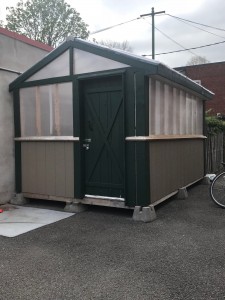 Last year, the Green Team built a greenhouse in the hockey parking lot next to the bike racks. The greenhouse, and its revival, has been our CAS (Creativity, Activity, Service) project for the year. So far, we have achieved heaps, such as: installing insulation, irrigation and shelves to hold the plants. The greenhouse is almost ready to be used, despite the many, many setbacks we have had. The winter was very harsh this year, so we had to wait until the snow was gone to start putting plants in the greenhouse. Now that the sun has finally come out, it should be up and running soon. Our goal is to use the greenhouse to grow produce that can be used directly by the LCC kitchen and in our community (for example, food banks). We hope to spread awareness about the benefits of a sustainable system and promote community engagement. We aim to do this via our very own greenhouse and, eventually, through a community farm.
Last year, the Green Team built a greenhouse in the hockey parking lot next to the bike racks. The greenhouse, and its revival, has been our CAS (Creativity, Activity, Service) project for the year. So far, we have achieved heaps, such as: installing insulation, irrigation and shelves to hold the plants. The greenhouse is almost ready to be used, despite the many, many setbacks we have had. The winter was very harsh this year, so we had to wait until the snow was gone to start putting plants in the greenhouse. Now that the sun has finally come out, it should be up and running soon. Our goal is to use the greenhouse to grow produce that can be used directly by the LCC kitchen and in our community (for example, food banks). We hope to spread awareness about the benefits of a sustainable system and promote community engagement. We aim to do this via our very own greenhouse and, eventually, through a community farm.
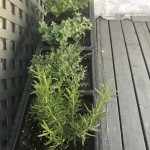
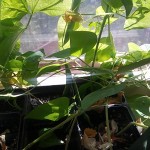
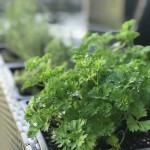
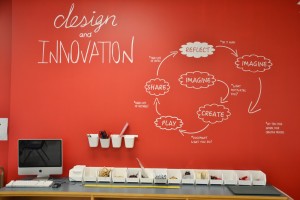 I’ve always been interested in architecture. When I was little, I used to build houses out of wood, draw floor plans of my room, and play on interior design apps. As I got older, I started watching a lot of HGTV and going around the city taking photos of different buildings.
I’ve always been interested in architecture. When I was little, I used to build houses out of wood, draw floor plans of my room, and play on interior design apps. As I got older, I started watching a lot of HGTV and going around the city taking photos of different buildings.
